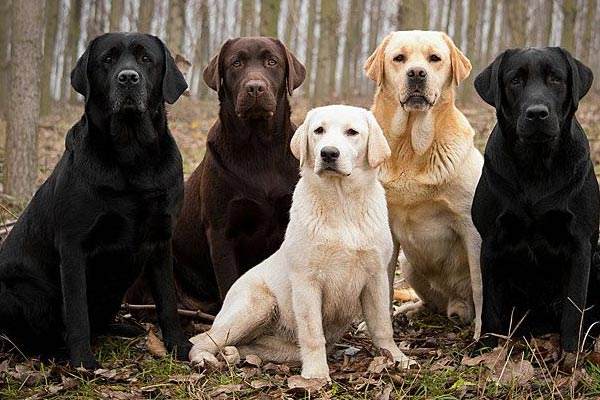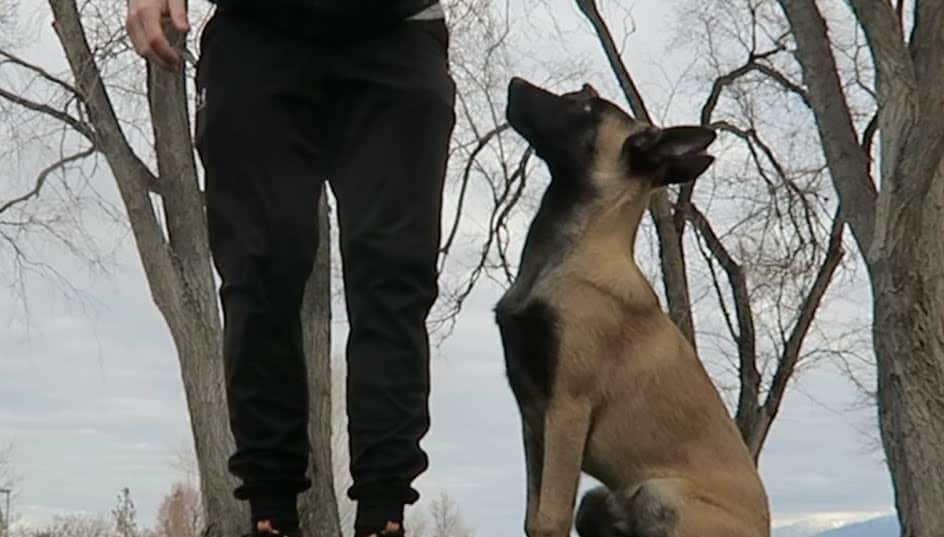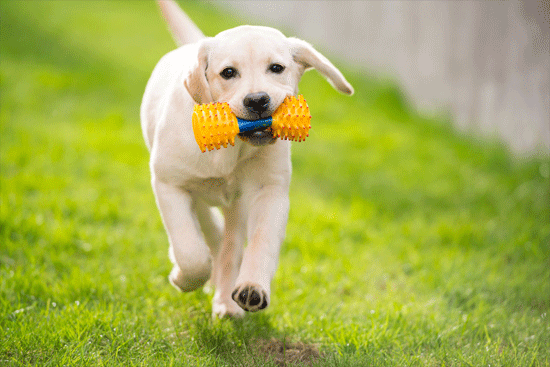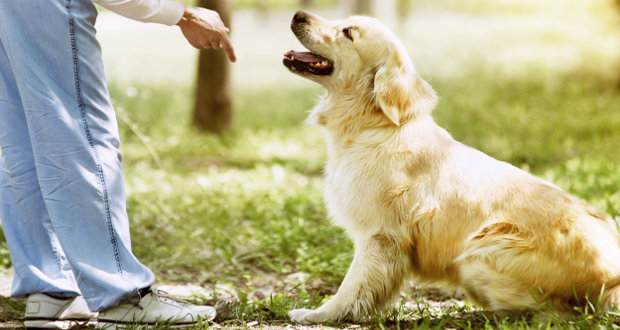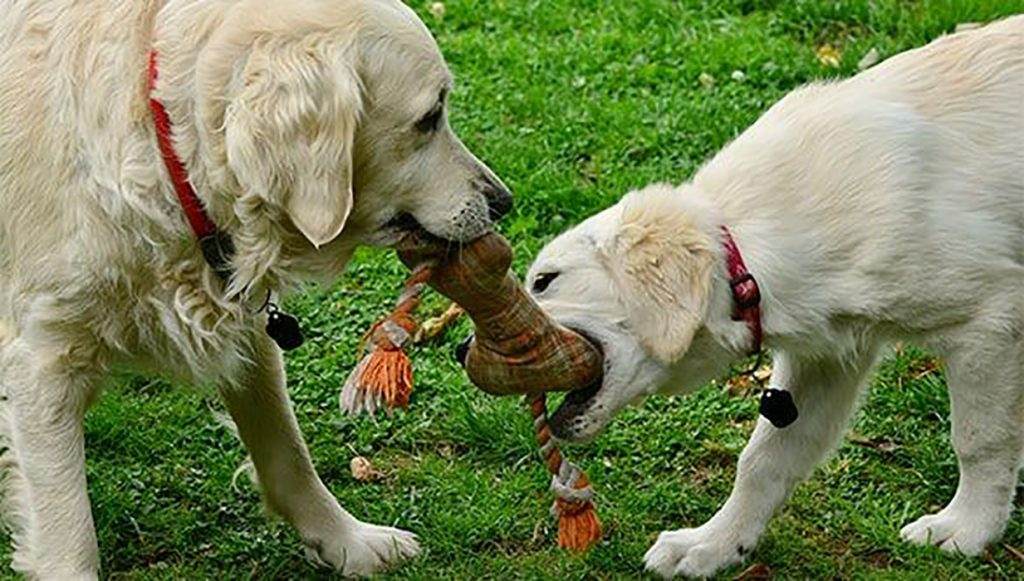A lot of people struggle with crate training their puppies and have issues with potty training their dogs. For best results with potty training, I would recommend starting with crates for puppies and observe their behavior.
Then slowly with time, they will automatically start to give you signals when they need to go out for potty.
Are Dogs Crate Loving Animals?
Dogs aren’t the den animals. Dogs spend over 95% of their lives outdoors, not huddled in kennels for comfort. This is the main reason why some pet-watchers argue that crates don’t meet the best interests of dogs.
People contend that caging dogs is a common practice used when domesticating them for human convenience. If it gives them any comfort, it is just because people have subjugated dogs to human’s way of doing things.
However, if you’re kenneling at your home, remember that crates should preferably be used for a short period. It can also be a pretty handy tool when you want to run some errands, or for particular situations such as anxiety whenever a storm hits.
A crate is not meant to spend many hours inside.
Crate’s main function, when you are at home, is to act as a den. However, it becomes a punishment for your canine friend when you leave him/her inside it for a long time.
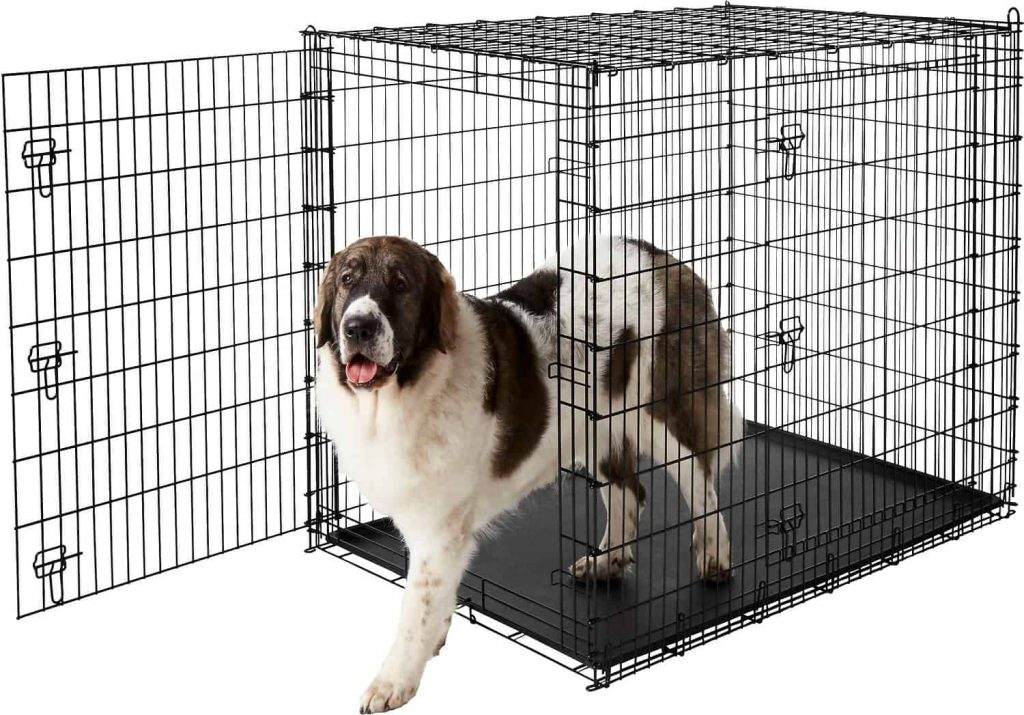
Advantages of Crate Training A Puppy Who is New to Your Home
Many individuals refuse to crate-train their puppies because they perceive the confinement as cruel. However, a kennel or crate can give puppies a sense of security.
When humanely and correctly used, crate training is also a highly successful management system which can be a lifeguard for most dog owners.
Just like any other training approach, kenneling can be abused, but when properly used, a crate can have numerous benefits both for you and your fur friend. Some of these advantages include:
1. It Helps With House-training Your Puppy
You can house train your puppy quickly by utilizing the confinement to establish a routine for outdoor exclusion, encourage control, and also prevent accidents when your puppy is left alone or at night.
2. Safety Nest
You can effectively confine your puppy sometimes when they might be underfoot such as:
- During mealtimes
- When you have some guests
- Over-excited
- When bothered by too much noise
- Confusion
- Activities such as many kids running around the house
3. Easy to Carry Puppy
A crate enables you to travel safely with your pup and be guaranteed that they will adapt more easily to strange places.
4. Household Hazards Prevention
A crate can help in preventing poisoning and injuries to your dog when they are left home on their own while you go to work or run your errands.
5. Helps Protect Your Furniture etc.
You can enjoy some peace of mind every time you leave your fur friend home alone, with the assurance that nothing can get destroyed or be soiled.
Also to make sure that they are protected, comfortable, and not picking up any bad habits.
6. A Relaxation Space for Puppy
If your dog is conditioned to use the crate properly, it will be more relaxed and comfortable when the need arises to crate them. It’s useful while using a boarding kennel or while visiting a pet groomer or a veterinary.
7. Post-surgery Convalescence
Your puppy can enjoy the security and privacy of a kennel of her own. They are also less likely to suffer from any complications after surgical procedures that restrict post-operative movements.
How Long Before a Puppy is Fully Crate Trained?
When it comes to kennel training your dog, there are as many methods as there are dog breeds. Crate training your puppy effectively is significantly dependent upon your puppy’s personality, his age and any experience they have with crate training in the past.
Some dogs will learn the basics within a few days, while others will typically struggle for several months. Handling crate training can be a challenging task, but it is vital to begin training your pup early on.
It’s also critical to remain consistent and adhere to a set schedule. Consider the process of crate training as a series of small steps.
Do not get frustrated if your dog is uncomfortable at first with the crate. Picking up the habit takes time, and it’s important to avoid rushing this process.
Be patient, and if you stick to the process, you will have to clean floors and a happy puppy around you.
When you are introducing the crate to your dog, keep it in a place in the house where your pup loves hanging out in and also keep the door of the crate open. That will give them the alternative to familiarize themselves with the crate and explore on their own.
One of the best techniques to encourage your dog to enter their crate is to put his favorite toy or treat inside. That will help in nudging your pup along in the crating process.
Crate Training a Puppy – Schedule
MORNING
6:00 – Take your dog outside before you begin your morning routine
6:15 to 6:30 – Play time. If worried are about accidents, stay away from carpeted places
6:30 to 7:00 – Feed and water your puppy, allow about fifteen or more minutes for digestion, and then put in the crate
7:00 – Take puppy outside
7:15 – Place puppy in the crate
AFTERNOON
12:00 – Take your dog outside
12:15 to 12:30 – Play time
12:30 to 1:00 – Water and feed your puppy and allow around fifteen minutes for digestion, and then put the pup in the crate
1:00 – Take your dog outside
1:15 – Put puppy in the crate
EVENING
6:00 – Take your puppy outside
6:15 to 6:30 – Play time
6:30 to 7:00 – Water and feed your puppy, allow fifteen minutes or more for digestion, and then put in the crate
7:00 to 8:00 – Take your puppy outside
8:00 to 9:00 – Play time
9:00 – Return your dog to the crate
11:00 – Take puppy outside
11:15 – Return pup to the crate for the remaining part of the evening.
How long does it take to crate train a puppy?
Puppies do pretty well when you establish a routine since they learn to expect what‘s coming, which assists them in reducing their anxiety.
A dog crate training plan is a wonderful thing because it provides you with a particular pattern of activities to follow each day. When done properly you can have a potty trained puppy in 3 weeks.
A schedule will assist you in remembering how long a puppy can hold its bladder depending on its age. You cannot expect a three months old dog to remain in a crate for four hours or more without any disasters.
Also, remember that puppies will potty mostly after eating, after a nap and after playtime. Always keep this in mind when you are working on your dog’s crate training schedule.
If your puppy is not successful, be patient, and try making things easier for them. If you follow a dog crate training schedule, your puppy will be potty trained in one to two weeks.
Crate Training a Puppy While at Work
Training a dog takes lots of patience and time, and it’s not something you can undertake lightly. If you normally work full-time and you are considering crate training your dog, you should make arrangements for some alternatives for your puppy.
Crating your puppy as you work should be a short-term measure to safeguard your belongings until your dog is trained well enough not to damage your things.
Always pickup a puppy crate that comes with multiple size options like this one from Midwest on Amazon.
Puppies should not be in a crate for more than four to six hours, particularly if they are small puppies. If you have to leave your dog on its own for longer, consider hiring a dog walker to attend to your pup and let them out to relieve himself or buy an X-pen.
Dogs should not be left in a kennel for a long time than they can hold their bladders, which is typically an hour for every month of age, minus or plus.
If you have a small puppy, leave them in a pretty small space with some pee pads to prevent them from relieving themselves in the kennel. Puppy themselves don’t like to stay in a crate with pee or poo.
In the meantime, you can utilize some of the healthy options outlined below to crate train effectively and also keep your pet safe while at work.
- Spend lots of your home time crate training your dog. If you want something pretty easy, to begin with, you can look for a puppy program online or other more advanced approaches such as clicker training. That will assist in removing the need for a kennel sooner.
- Arrange for one of your friends or pay a local dog sitter to play and walk your puppy at lunchtime, which will help break the day.
- Keep the crate in a puppy-proofed room or a spare room in your home.
- Invest in an experienced dog trainer to take your pup for the first couple of weeks or months to teach the dog how to behave well.
- Look for a friend who also owns a puppy and allows the puppies to entertain themselves while both you go to work.
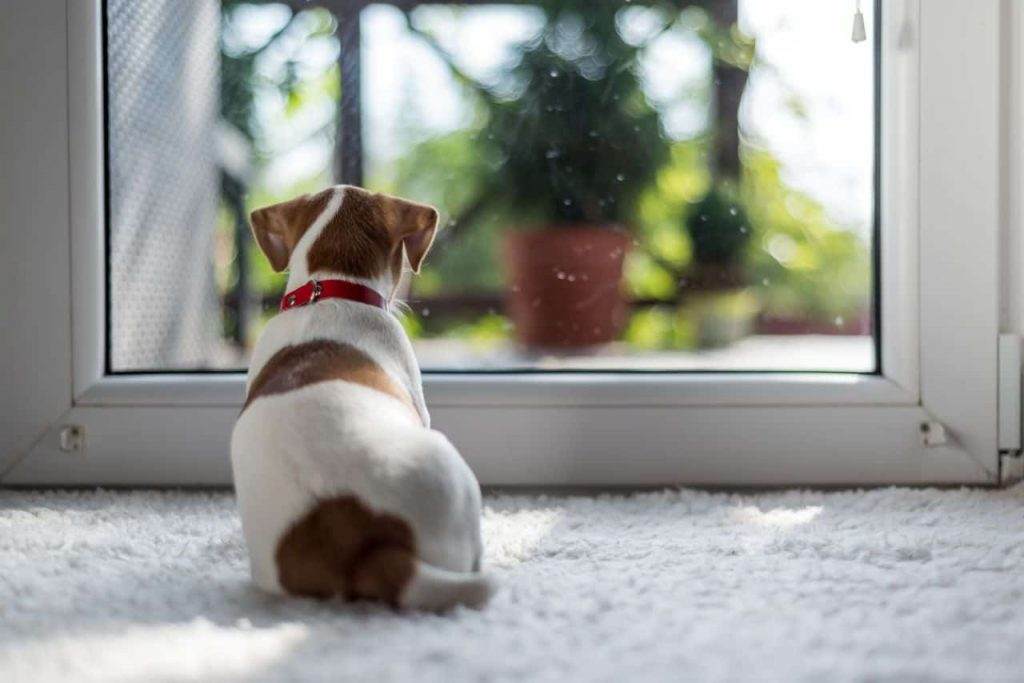
Tips That Can Help you With Puppy Crate Training
So today I’m going to teach you seven tips for your puppy to love their crate.
1. Type of Crates
The first thing I wanted to explain to you is that there are basically two different types of crates that are great for puppies. One would be a wire crate and the second would be a plastic, enclosed crate.
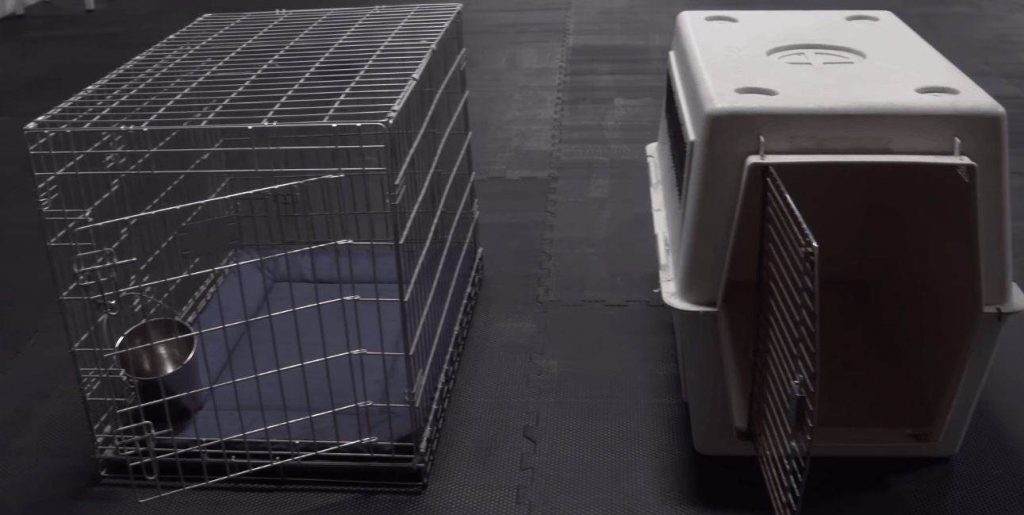
There are other types of crates out there like soft-sided crates or crates that are easier to move around. But when you’re dealing with a baby puppy, those aren’t exactly safe choices to start off with your puppy.
2. Make It Easy For The Puppy
One of the things I do to train my new puppies is to play little fun games. I make it easy for her to happily go in and out of the crate without any stress.
I don’t put her in and lock her in there right away. I might just do some fun things to get her willing to go in and then I let her come right back out again.
So, I have a couple of treats ready and I just throw them into the back of the crate, so that she can hear them hit off the crate. Just let her go in and get the treats.
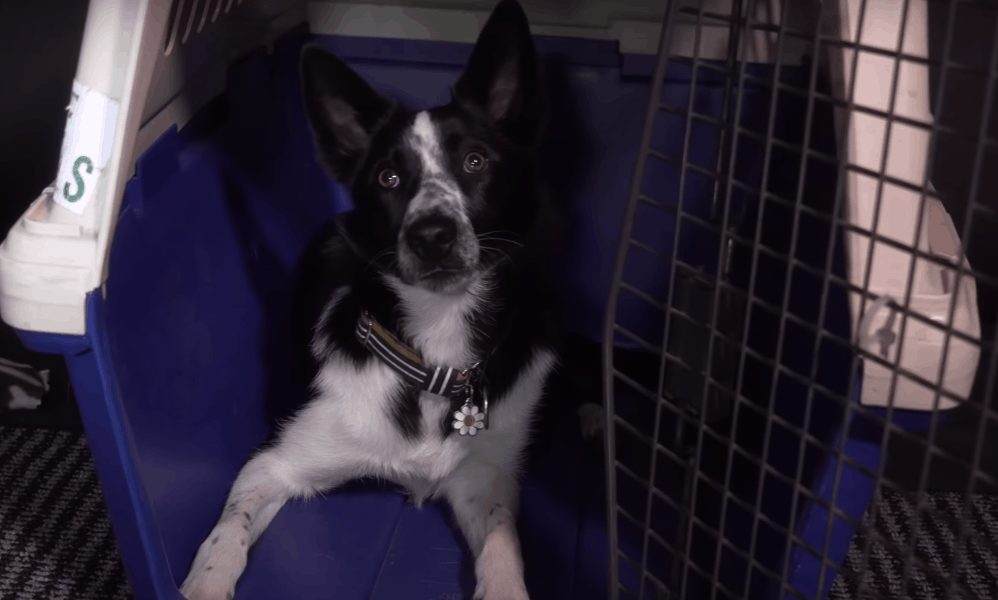
3. Taking It To The Next Level
Once I’ve repeated the tip number 2 a few times, the next thing I like to do is play a little offering game. I keep the treats ready but I don’t put them in crate first, I wait till she offers to go in and then I reward her.
You see, now I switched the first move to the puppy. First she goes into a crate then she gets the reward.
So all of the food, is always being delivered while she’s inside the crate. And I can either feed by hand, or I can toss some cookies into the back of the crate so she can get them out.
It’s Fun little game to play with your dog that teaches them that the crate is very very fun.
4. The Size of Crate Matters
When you’re choosing a crate for your puppy, try to make sure that it’s properly sized. If you have a bigger breed, he’s going to be growing over a long period of time, then you can buy bigger crate.
Also buy some barricades which can allow the crate to be adjustable with your dog as he gets bigger.
The ideal size of a crate for a dog/puppy is for it to be big enough that they can lie down, stretch their legs out and turn around easily in the crate. If it’s any bigger than that, a lot of puppies tend to use one end as their play or sleep area and often use the other end as their potty area.
That can open a world of issues. I do have an article on this website for a complete guide on dog potty training.
So keeping the crate small enough will help prevent any bathroom issues. They would want to keep it nice and clean as their den.
5. How to crate train a puppy at night?
Make sure that you don’t have any absorbent type of material in their crate. Whether it be towels or blankets or even stuffed animals.
I have known many puppies to go to the bathroom on their bedding or any other stuffy blanket. They will then push it off to the side so the rest of their area is quite clean.
Dogs are fairly clean animals, they don’t necessarily like to lie in their own mess. So, it is nice for them to be able to push it off to the side. If there is nothing in their crate that they can pee on, then they will try to hold their bladder a little bit longer.
This will also train them to make a noise or make a sound to let you know that they have to go outside. Then you can let them out from the crate.
Puppies have tiny bladders, which means they cannot necessarily hold their bladder for a really long time. It’s in your best interest to take your puppy to the bathroom often so they don’t end up going to the washroom in their crate.
Normally for the first couple of nights, I find that I do have to get up once or maybe twice throughout the night to let them go to the washroom.
I want to bring to your notice that if you want to use the crate just for sleep purposes of your dog then you better read this article on teaching dogs to go sleep and relax. The crate has other uses and shouldn’t be used to make your puppy sleep there every-time.
Usually with training, they can remain inside from six to seven hours without having to be let out. But that’s something that you have to do gradually and every dog is different.
I have a little poodle, she took a little longer to be able to do that because her bladder is so tiny. Beeline, my latest puppy was able to sleep through the night by the second or third night without issues.
But again she’s a little bit bigger breed, easier for her to hold her bladder.
5.1 Placing Water in The Crate
Another thing that may help your puppy to not go to the bathroom in their crate is reducing the amount of water that they have at a certain time of night. So for example maybe after eight o’clock, no more water in their crate.
I’ve had other issues with water in the crate. I own dogs that tend to love swimming in their water dish.
Now a days, whenever I do put water in their crate, I’m very careful to secure the bowl to the crate very very well. That way they can’t pop the bowl off and splash water everywhere.

And if I can’t secure it, then I’ll let them have a drink and then I’ll take the bowl out of the crate. And that usually help provide a much cleaner area for the puppy.
6. Puppy in The Crate During Night
It’s also a really good idea to keep the crate close by you. When I have a new puppy home, I generally have more than one crate for that puppy.
I usually put one crate in the family area of my home, a place that we can see the puppy at all times.
And then I have a second crate that I usually put in my bedroom and that’s where the puppy will sleep at night. That way if they stir or make any noise, I can decide at that time whether they have to go to the washroom.
This also helps me find out if its been a few days and the puppy is able to hold her bladder.
I can address the noise in the crate and start teaching the puppy to be able to sleep quietly through the night and not have to go out until the morning.
7. Make it The Dinning Area
The other thing that I do with my puppies for quite some time even till they’re several months old is, I give them all of their meals in their crate. So breakfast and dinner are served inside their crate.
And what starts to happen is that when they hear the kibble hit the bowl and I say do you want your breakfast, are you hungry? She just jumps right in that crate because she knows dinner’s gonna be served or breakfast is gonna be served in the crate.
By the way, do check our all-organic dog cupcake recipe which we highly recommend you to make at home.
Then I can put the bowl inside the crate with her and I can shut the crate door. This gets her used to eating and being rewarded while she’s in the crate with the door shut.
And then we can go ahead with the training from there. It’s a great way to get the dog to go in that crate really easily without any issues whatsoever.
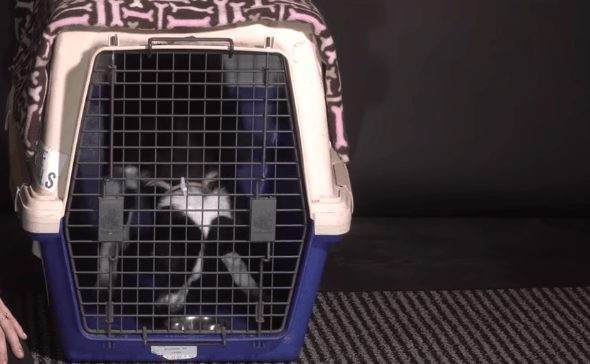
Bonus Tip: Crate Training an Older Dog
Training an older puppy some new tricks will take repetition and a lot of time. Your older dog will get used to new ideas with encouragement and some tasty rewards to sleep in a comfortable and closed-off place.
Ensure that you take this training gradually and avoid locking your older pup in pen for long periods when you are getting started.
However, before purchasing a crate, ensure that you know the right size you will require for your puppy. Your canine friend should be able to turn around and stand up freely in the crate.
It doesn’t have to be too large, but a small crate will be too constraining for your puppy. Make sure you have some soft bedding for your puppy as well, so sleeping is comfortable and cozy.
Here are some videos which you can watch for crate training your puppy:
Puppy Crate Training Potential Problems
Increase in Separation Anxiety
If you are trying to use the kennel as a solution for separation anxiety, then you might not be successful. A crate can prevent your canine friend from being unruly and destructive, but at times your pet might injure themselves as they try to escape.
You can only solve separation anxiety issues with desensitization and counter-conditioning techniques. However, if you cannot solve the issue on your own, you might consider consulting a qualified animal-behavior expert for assistance.
A Lot of Time in the Crates
Always remember that a crate is not a miraculous solution. Your dog might feel frustrated and trapped if you don’t use the crate correctly. Crating your dog throughout the day while you are at work and again during the night will make the dog feel they are spending a lot of time in a pretty small area.
If you are a busy person, you should make some other plans to accommodate both their emotional and physical needs.
Besides, puppies aged below six months should not remain in den for four hours or more at a time because they cannot control their bowels and bladders for long periods.
Crate Training a Crying Puppy
If you crate train your dog well and did not rush the process, then try ignoring the whining and crying.
If your puppy is simply testing you, they might stop the behavior soon. Avoid pounding on their crate or yelling at them because you will only make things worse.
However, if the issue becomes quite unmanageable, you might be forced to begin the crate training process all over again.
Crate Training Do’s and Don’ts
The Do’s of Crate Training
Here’s what you should do during the crate training process:
- Begin with short training sessions when crate training, and only advance according to the pace of your puppy. Don’t rush the process.
- You should consider using some relaxing music or calming pheromones, which are incredibly beneficial when crate training and when your puppy has mastered being in their crate as well.
- Use a lot of patience, compliments, and treats.
- Ensure that your dog has had some outdoor potty opportunity and fun playtime before each crate training session.
- Take your dog outdoors for a potty break, once you let them out of the crate. That will help them know that potty time always happens after crate breaks, which will help in solidifying their potty training.
- Keep the excitement of your pet to the minimum whenever you go back home during the crate training process and when you start leaving the dog on its own during the daytime. That will assist in reducing your puppy’s expectations and anxiety of your return.
The Don’ts of Crate Training
During the crate training process, remember these don’ts every time:
- Don’t utilize the crate as a way of punishing your dog. A crate should be a place where your puppy feels happy and safe. They should always associate the crate with food, treats, and security.
- Avoid leaving your dog in the kennel for a long time. Most puppies are happy to remain in the pen while you are working at the office. You can consider going home on your lunch breaks to check up on them. Again, ensure that they get enough exercise and bonding time when you return home.
- Don’t leave your young puppies alone for an extended time in the crate because they cannot hold bladder for that much time.
- Avoid making your departure from your home a big deal. Keep your dog busy with its toys or food puzzle a couple of minutes before you leave the house. Then leave the house on a low key while they are busy with their food puzzle or toys.
Conclusion
I found crate training to be extremely beneficial in the way that I’ve been able to raise my dogs. It’s reduced the amount of mistakes that my dogs have had in the house, as far as house training goes.
- It prevented them from chewing things at my home.
- Its also helped me with any behavioral issues that I may have had.
- It just allows me to make sure that when I’m not able to supervise my dog, I know there is a safe place where they can just be calm and relaxed.
But on top of that, I try to make sure that I make the crate a really, really great place for my dogs. We have quite a few dogs and many of them are old enough and trained enough that they don’t need their crates.
But I think they would be very sad if we took their crate away. Often if we can’t find, even our oldest dog, we can eventually find her sleeping in a crate.
So, if you teach the dog that the crate is a great place. Not only does it help you, but it also gives the dog a place that they can go and hang out and be happy.
References
- https://books.google.com/books?hl=en&lr=&id=dsrw8BFEJb8C&oi=fnd&pg=PA1&dq=Crate+Train+a+Puppy&ots=TC7wp7BSuv&sig=0ky0hKr9_E7w5K7lg-LbcKn4rAc
- https://petremedy.co.uk/coping-confinement-guide-crate-training/
Table of Contents
